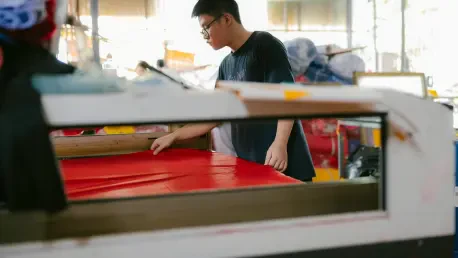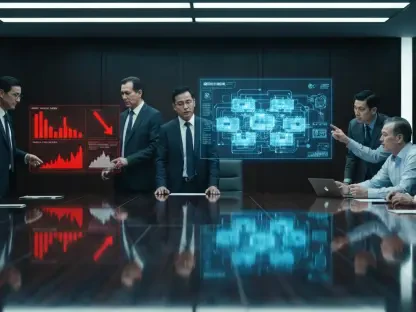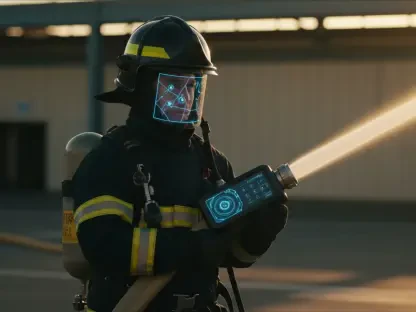Technology expert Oscar Vail has made significant contributions to emerging fields such as quantum computing, robotics, and open-source projects. He consistently pushes the boundaries of technology, adapting the latest innovations to real-world applications. In our interview, we explore developments in automated inspection techniques, focusing on a new computational method that utilizes Vision-Language Models (VLMs) for creating efficient inspection plans. This conversation delves into the model’s advantages, operational processes, challenges faced during its development, and future prospects.
Could you explain the inspiration behind developing this new computational technique for automated inspection?
This technique was born from real-world challenges in efficiently generating task-specific inspection routes, which are crucial for infrastructure monitoring. We wanted a solution that didn’t just navigate unknown spaces but could transform written directives into actionable inspection trajectories for robots.
How do traditional inspection methods compare to the approach you’ve developed?
Traditional methods heavily rely on human agents and are often manual, time-consuming, and prone to human error. Our approach allows for rapid, precise planning using natural language, significantly streamlining the process and reducing the margin for error.
Can you provide a brief overview of how Vision-Language Models (VLMs) are utilized in your method?
VLMs are integral to our method; they process both visual data and textual description to interpret inspection targets. This dual capability allows the model to evaluate semantics and spatial arrangement, facilitating the generation of precise inspection paths.
What specific advantages do Vision-Language Models offer in the context of inspection planning?
VLMs offer the significant advantage of interpreting complex instructions and spatial relationships from text, allowing inspection plans to be both accurate and aligned with the user’s intentions. They bridge the gap between language and spatial understanding, which is crucial for effective planning.
How does your method differ from other VLM-based approaches that explore unknown environments?
While many VLM applications focus on navigating unfamiliar terrains, our method is specialized for known 3D environments. It leverages existing data to create finely-tuned inspection plans without requiring further environment exploration.
Could you walk us through how your training-free pipeline operates, from input to output?
The process begins with a text description and a 3D map of the environment. The VLM evaluates potential viewpoints, ensuring semantic alignment. Using a model like GPT-4o, it assesses spatial relationships and solves a Traveling Salesman Problem to create smooth, optimized inspection routes.
What role does natural language processing play in generating inspection plans?
Natural language processing allows our model to interpret text-based instructions accurately. It ensures that the generated inspection trajectories closely follow the desired tasks and targets, facilitating seamless integration into existing workflows.
How does the model interpret spatial relationships and constraints within the environment?
The model uses a combination of multi-view imagery and spatial reasoning to understand relative positions and constraints, optimizing path planning by considering relevant environmental factors like location and order of inspection points.
What is the Traveling Salesman Problem, and how is it applied in your model?
This classic problem involves finding the shortest path through a set of points with the least cost or distance. In our model, it helps optimize the inspection route, ensuring efficiency in covering all designated areas with minimal resource expenditure.
How does your method ensure the generation of smooth and optimal inspection trajectories?
By solving the Traveling Salesman Problem with mixed-integer programming, we align routes with semantic relevance and spatial constraints. This approach ensures that trajectories are smooth and efficient, maximizing coverage while minimizing time.
Could you discuss the accuracy and effectiveness of your model based on your tests?
In our tests, the model consistently generated precise and coherent trajectories, predicting spatial relations with over 90% accuracy. This is a testament to its effectiveness in translating language-driven plans into practical inspection paths.
What were the main challenges you encountered during the development and testing of your approach?
Developing a robust model that could interpret both text and imagery without additional training was complex. Ensuring accuracy in spatial interpretation and maintaining efficient computation time posed significant challenges throughout our process.
How do you envision this model being integrated with real-world robotic systems for inspections?
We foresee our model being integrated to automate inspections in industries where monitoring is hazardous or inaccessible for humans, such as in power plants or tunnels. This would greatly enhance safety and efficiency.
What future enhancements are you planning to improve the model’s performance further?
We’re aiming to extend capabilities to more complex environments, integrating active visual feedback for dynamic plan adjustments, and exploring closed-loop physical inspection deployment to enhance real-world applications.
Can you elaborate on how active visual feedback may refine plans on the fly?
Active visual feedback allows the system to adapt plans based on live input and environmental changes, leading to real-time adjustments that optimize efficiency and responsiveness during inspections.
How does your model’s use of GPT-4o enhance spatial reasoning capabilities?
GPT-4o offers advanced capabilities for interpreting spatial relationships within a dataset through multi-view imagery. This enhances the model’s ability to align plans with real-world conditions accurately and intuitively.
Are there any specific environments or scenarios where your method excels?
Our method excels in environments that are well-mapped and where traditional human inspection poses safety risks, such as industrial sites, large-scale infrastructure, and potentially dangerous or hard-to-reach areas.
What potential impact do you see your research having on industries reliant on infrastructure inspection?
The implications are profound, potentially revolutionizing inspection processes with increased efficiency, safety, and cost-effectiveness, especially in hazardous or large-scale environments where human access is limited.
Can you discuss the potential for closed-loop physical inspection deployment in the future?
Closed-loop systems could enable robots to adjust their pathways continuously in response to real-time sensory data, thereby optimizing inspection processes dynamically and improving the robustness of infrastructure assessments.
How do you plan to ensure the scalability of your model across different and more complex 3D environments?
We are investing in adaptive algorithms that can scale with the complexity and variety of industrial environments, ensuring that our model remains effective despite increasing challenges in spatial and operational requirements.









